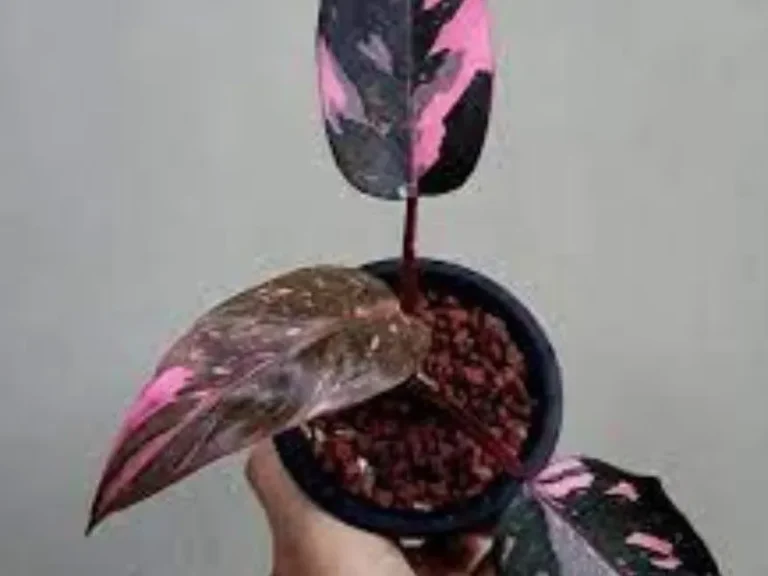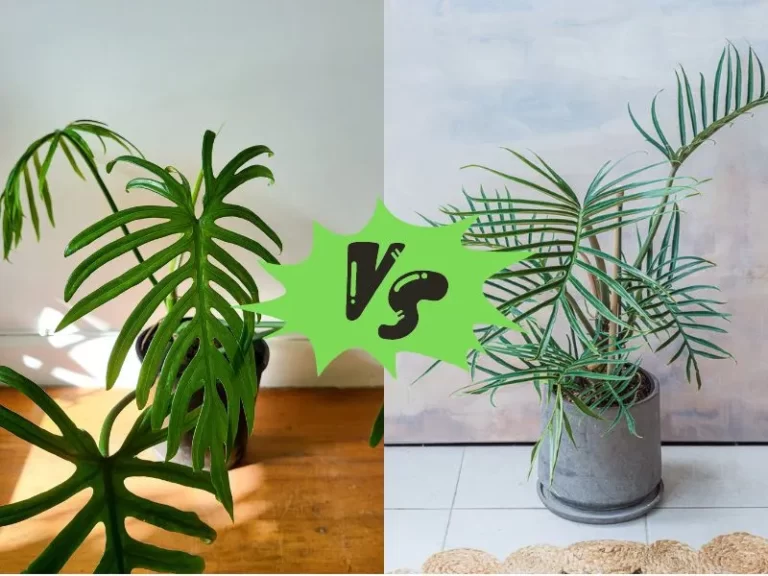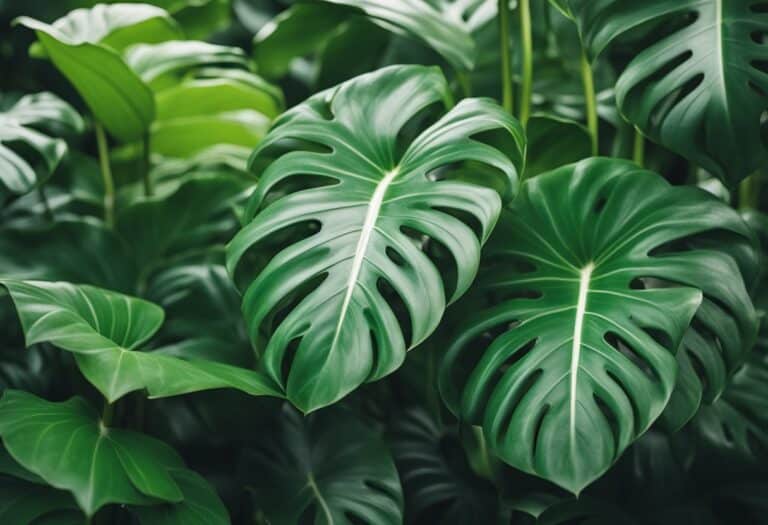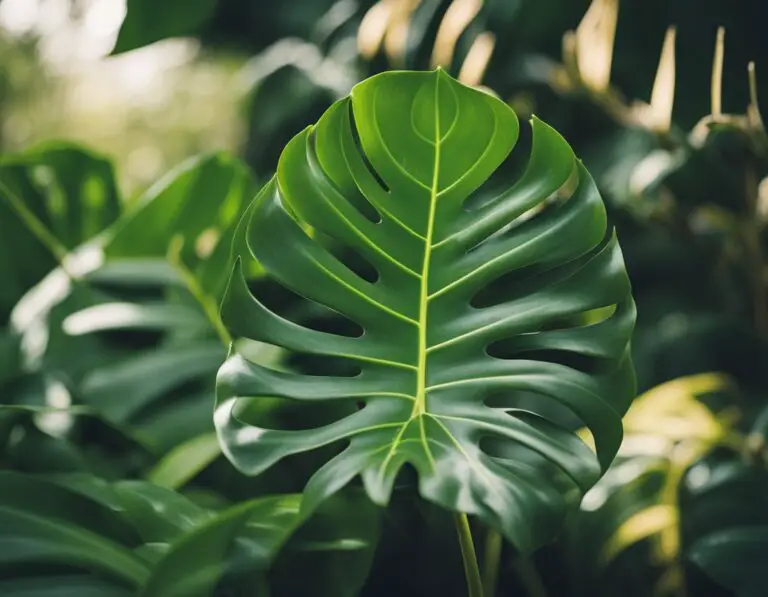Philodendron Erubescens Red Emerald: A Guide to Care and Maintenance
Philodendron erubescens Red Emerald is a flowering plant that belongs to the Araceae family. It is native to Colombia and is known for its heart-shaped leaves and deep red flowers. This plant is also referred to as the blushing philodendron.

Philodendron erubescens Red Emerald is a popular houseplant due to its attractive foliage and ease of care. It is a great addition to any indoor space and can be grown in a variety of containers. With proper care, this plant can thrive and add a touch of beauty to your home.
Key Takeaways
- Philodendron erubescens Red Emerald is a flowering plant that is native to Colombia and is known for its heart-shaped leaves and deep red flowers.
- This plant is also referred to as the blushing philodendron and is a popular houseplant due to its attractive foliage and ease of care.
- With proper care, Philodendron erubescens Red Emerald can thrive and add a touch of beauty to your home.
Botanical Description

Philodendron erubescens Red Emerald is a flowering plant native to Colombia, belonging to the Araceae family. It is known for its heart-shaped leaves and deep red flowers, though it is not common for houseplant philodendrons to produce flowers. Here is a closer look at the plant’s leaf morphology, stem characteristics, and root system.
Leaf Morphology
The leaves of Philodendron erubescens Red Emerald are large, heart-shaped, and glossy, with a deep green color and a reddish tint on the undersides. The leaves grow to be around 10 to 18 inches in length and 8 to 16 inches in width.
They have a smooth texture and are slightly wavy along the edges. The leaves are arranged alternately on the stem and have a petiole that attaches them to the stem.
Stem Characteristics
The stem of Philodendron erubescens Red Emerald is thick and sturdy, with a green color and a slightly grooved texture. It can grow up to 4 feet in length and 1 to 2 inches in diameter.
The stem has nodes where the leaves attach and can produce aerial roots that help the plant climb and anchor itself to surfaces.
Root System
The root system of Philodendron erubescens Red Emerald is composed of thick, fleshy roots that grow horizontally and vertically.
The roots are capable of absorbing nutrients and water from the soil and can also store moisture and nutrients for the plant to use later. The plant can also produce adventitious roots, which are roots that grow from the stem or leaves of the plant.
Taxonomy and Classification
Genus Philodendron
Philodendron erubescens Red Emerald belongs to the genus Philodendron, which is a large and diverse group of plants that are native to tropical regions of the Americas. The genus Philodendron is part of the family Araceae, which also includes other popular houseplants like the peace lily and the Chinese evergreen.
Species Erubescens
The species name of Philodendron erubescens Red Emerald is Erubescens, which means “turning red” in Latin. This species is native to Colombia and is known for its large, glossy, heart-shaped leaves that start out green and gradually turn reddish-purple as they mature. The plant is a vigorous climber, with red stems that can grow up to 20 feet long.
Cultivation and Care
Philodendron erubescens Red Emerald is a tropical plant that can be grown indoors or outdoors in warm climates. With its beautiful reddish leaves, it’s a popular choice for plant enthusiasts. Here are some tips on how to cultivate and care for this stunning plant.
Soil Requirements
The Philodendron erubescens Red Emerald prefers a well-draining soil mix that is peat-based. Peaty soil helps to ensure excess water drains away, thus preventing root rot. It also prefers slightly acidic pH levels, ideally between 6.0 and 7.0. You can use a pH meter to check the soil acidity level.
Watering Schedule
To keep your Philodendron erubescens Red Emerald healthy, it’s important to water it once or twice a week. Make sure the soil is moist but not waterlogged. Overwatering can cause root rot and other problems. You can use a moisture meter to check the soil moisture level.
Light and Temperature
The Philodendron erubescens Red Emerald enjoys bright, indirect light. Direct sunlight can scorch the leaves and cause the soil to dry out too quickly. It prefers normal indoor temperatures between 65 to 80 degrees Fahrenheit. If the temperature drops below 60 degrees Fahrenheit, the plant may suffer.
Fertilization Needs
The Philodendron erubescens Red Emerald can benefit from regular fertilization during the growing season. You can use a balanced liquid fertilizer once a month. Avoid over-fertilizing, as this can cause salt buildup in the soil and damage the plant.
Propagation Methods
Philodendron erubescens Red Emerald can be propagated through various methods. In this section, we will discuss the three most common methods: stem cuttings, air layering, and seed germination.
Stem Cuttings
Stem cuttings are the most popular way to propagate Philodendron erubescens Red Emerald. To begin, select a healthy stem with several leaves on the mother plant. Using clean, sharp pruners or scissors, take a six-inch cutting just below a leaf node.
Remove the leaves from the bottom half of the stem. Dip the cut end in rooting hormone and plant it in a well-draining soil mix. Water the soil thoroughly and cover the cutting with a clear plastic bag to create a humid environment.
Keep the cutting in a warm, bright spot but out of direct sunlight. After a few weeks, roots should start to form, and the cutting can be transplanted into a larger pot.
Air Layering
Air layering is a more advanced method of propagation, but it is a great way to propagate larger plants. To begin, select a healthy stem and make a small cut just below a node. Wrap the cut area with damp sphagnum moss and cover it with plastic wrap.
Secure the plastic wrap with string or twist ties. Keep the moss damp and wait for roots to form. Once roots have formed, cut the stem below the roots and plant it in a well-draining soil mix.
Seed Germination
Seed germination is the least common method of propagation for Philodendron erubescens Red Emerald. To begin, collect the seeds from a mature plant. Sow the seeds in a well-draining soil mix and keep the soil moist but not waterlogged.
Cover the pot with plastic wrap to create a humid environment and keep it in a warm, bright spot but out of direct sunlight. After a few weeks, the seeds should start to germinate, and the seedlings can be transplanted into individual pots.
Pest and Disease Management
Philodendron erubescens Red Emerald is a relatively low maintenance plant, but it is still susceptible to pests and diseases. Here are some common issues and how to prevent and treat them.
Common Pests
The most common pests that can infest your Philodendron erubescens Red Emerald are mealybugs, spider mites, and scale insects. You can identify mealybugs by their white, cotton-like appearance, spider mites by their webbing, and scale insects by their hard, shell-like covering.
To prevent these pests from infesting your plant, make sure to keep it clean and dust-free. You can also use insecticidal soap or neem oil to treat an infestation. Be sure to follow the instructions on the label carefully.
Fungal Diseases
Philodendron erubescens Red Emerald is also susceptible to fungal diseases such as root rot and leaf spot. These diseases are caused by overwatering, poor drainage, and high humidity.
To prevent these diseases, make sure to plant your Philodendron erubescens Red Emerald in well-draining soil and avoid overwatering. If you notice any signs of disease, such as yellowing or brown spots on the leaves, remove the affected leaves and treat the plant with a fungicide.
Preventative Measures
To prevent pests and diseases from infesting your Philodendron erubescens Red Emerald, it’s important to take preventative measures. Here are some tips:
- Keep your plant clean and dust-free.
- Avoid overwatering and make sure the soil is well-draining.
- Maintain moderate humidity levels.
- Inspect your plant regularly for signs of pests and diseases.
By following these tips, you can keep your Philodendron erubescens Red Emerald healthy and thriving.
Pruning and Maintenance
Philodendron erubescens Red Emerald is a low-maintenance plant that requires minimal pruning. However, regular maintenance can help keep the plant healthy and looking its best.
Pruning Techniques
To prune your Philodendron erubescens Red Emerald, you will need a clean, sharp pair of pruning shears. You can use pruning shears to remove any dead or yellowing leaves, as well as any damaged or diseased foliage. It is also possible to prune back the plant to control its size and shape.
When pruning, make sure to cut the stems cleanly and at an angle. Avoid tearing or crushing the stems, as this can damage the plant and make it more susceptible to disease. After pruning, make sure to clean your pruning shears with rubbing alcohol to prevent the spread of disease.
Support Structures
Philodendron erubescens Red Emerald is a climbing plant that can benefit from a support structure. You can use a moss pole, trellis, or other support to help the plant climb and grow. As the plant grows, you can gently tie the stems to the support structure using soft plant ties or twine.
Support structures can also help prevent the plant from becoming too top-heavy and falling over. If your Philodendron erubescens Red Emerald is already leaning or falling over, you can use a stake or other support to prop it up.
Environmental Impact
Invasive Potential
Philodendron erubescens Red Emerald is not considered an invasive species. However, it is important to note that any plant has the potential to become invasive if it is introduced to a new ecosystem where it has no natural predators or competitors.
Therefore, it is recommended to keep this plant contained within your garden or home to prevent accidental spread.
Ecosystem Services
Philodendron erubescens Red Emerald is not known to have any significant ecosystem services. However, it is a popular houseplant due to its attractive appearance and ease of care. By growing this plant indoors, you can help improve indoor air quality by removing pollutants such as formaldehyde and benzene.
Frequently Asked Questions
What are the distinguishing features of the Philodendron erubescens ‘Red Emerald’?
Philodendron erubescens ‘Red Emerald’ is known for its beautiful, heart-shaped leaves and striking red stems. The leaves are typically a deep green color with a glossy finish, and they can grow to be quite large, up to 18 inches long and 12 inches wide. The plant can also produce red flowers, although this is rare in houseplants.
How can one differentiate between Philodendron ‘Red Emerald’ and ‘Imperial Red’?
Philodendron ‘Red Emerald’ and ‘Imperial Red’ are often confused with each other due to their similar appearance. However, ‘Red Emerald’ has larger, more elongated leaves that are a darker green color, while ‘Imperial Red’ has smaller, more rounded leaves that are a lighter green color with red undersides.
What care requirements are essential for maintaining a healthy ‘Red Emerald’ Philodendron?
To keep your ‘Red Emerald’ Philodendron healthy, it is important to provide it with bright, indirect light and keep the soil consistently moist but not waterlogged.
The plant prefers a warm, humid environment, so misting the leaves regularly can help to keep it happy. Fertilizing once a month during the growing season can also help to promote healthy growth.
Why are the leaves on my ‘Red Emerald’ Philodendron turning yellow?
Yellowing leaves on a ‘Red Emerald’ Philodendron can be a sign of overwatering, underwatering, or exposure to cold temperatures. Make sure to check the soil moisture regularly and adjust your watering schedule as needed. If the plant is exposed to cold drafts or temperatures below 60°F, it can also cause the leaves to turn yellow.
At maturity, what size can one expect a ‘Red Emerald’ Philodendron to reach?
At maturity, a ‘Red Emerald’ Philodendron can reach up to 3-6 feet in height and 2-3 feet in width. This can vary depending on the growing conditions and care provided to the plant.
Is the variegated form of ‘Red Emerald’ Philodendron considered rare, and how does it differ from the standard variety?
The variegated form of ‘Red Emerald’ Philodendron is considered rare and highly sought after by collectors. The leaves of the variegated form have a unique pattern of white or yellow markings, which can vary in intensity and shape. The care requirements for the variegated form are the same as the standard variety, but it may grow more slowly and require more light to maintain its variegation.






